Land Invertebrates
Media

Species Types
Scientific Name
More than 900 species in North America north of Mexico
Description
Planthoppers are a large and diverse group of small hopping bugs. They tend to be less abundant than other types of hoppers.
Media
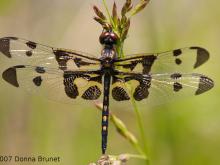
Species Types
Scientific Name
Species in the suborder Anisoptera
Description
Like damselflies, dragonflies have long bodies, two pairs of long, membranous, finely veined wings, and predaceous aquatic larvae. Dragonflies typically hold their wings stretched outward, horizontally.
Media

Species Types
Scientific Name
Leucauge venusta
Description
The orchard orbweaver is a small, colorful, greenish, delicate spider that makes circular webs in low bushes and damp woodlands. It typically hangs in the middle of its web, its back to the ground.
Media
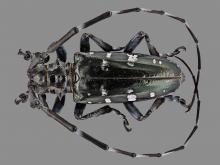
Species Types
Scientific Name
Anoplophora glabripennis
Description
An unwanted arrival from Asia that's now living in parts of the United States, the Asian longhorned beetle could destroy millions of acres of American hardwoods. Report any sightings immediately.
Media

Species Types
Scientific Name
About 84 species in North America.
Description
Many blow flies are so shiny and colorful they’re called greenbottles and bluebottles. But pretty as they are, it’s hard not to be repulsed by their larval diets.
Media

Species Types
Scientific Name
Chrysochus auratus
Description
The shiny, iridescent dogbane beetle is one of Missouri's most beautiful insects. As the name indicates, this beautiful beetle feeds on dogbanes.
Media

Species Types
Scientific Name
Phanaeus vindex
Description
Although most dung beetles are dull black, the rainbow scarab is bright metallic green and copper.
Media

Species Types
Scientific Name
Anoplius spp.
Description
There are nearly 50 North American species of blue-black spider wasps. Many in this genus are entirely black, with a bluish sheen, while many others have an orange marking on the abdomen.
Media

Species Types
Scientific Name
About 20 species in North America north of Mexico
Description
Scoliid wasps are a family of beetle hunters. Large, rather hairy wasps, some are handsomely colored. The female digs in soil, finds a scarab beetle grub, and lays an egg on it.
Media
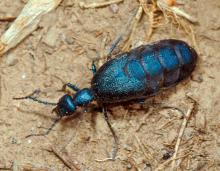
Species Types
Scientific Name
Meloe spp.
Description
Blister beetles in the genus Meloe are called oil beetles because of a yellowish oil they excrete from their joints when squeezed or distressed. This oil contains cantharidin, an irritating chemical that can cause blistering in many people.
See Also
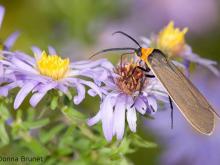
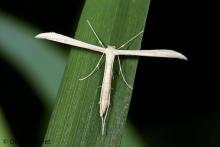

Media

Species Types
Scientific Name
Cisseps fulvicollis
Description
The yellow-collared scape moth is more often “orange-collared.” And whether you think it looks more like a firefly or a wasp, it’s still a moth!
Media

Species Types
Scientific Name
Nearly 150 species in North America north of Mexico
Description
Slim, delicate plume moths are instantly recognizable by their T-shaped silhouette, long legs, and muted shades of tan and brown. It can be hard to separate the various species.
Media

Species Types
Scientific Name
Pyrrharctia isabella
Description
Not many people know the adult Isabella tiger moth when they see one, but we’re all acquainted with its caterpillar, the woolly worm, or woolly bear.
About Land Invertebrates in Missouri
Invertebrates are animals without backbones, including earthworms, slugs, snails, and arthropods. Arthropods—invertebrates with “jointed legs” — are a group of invertebrates that includes crayfish, shrimp, millipedes, centipedes, mites, spiders, and insects. There may be as many as 10 million species of insects alive on earth today, and they probably constitute more than 90 percent all animal species.





















